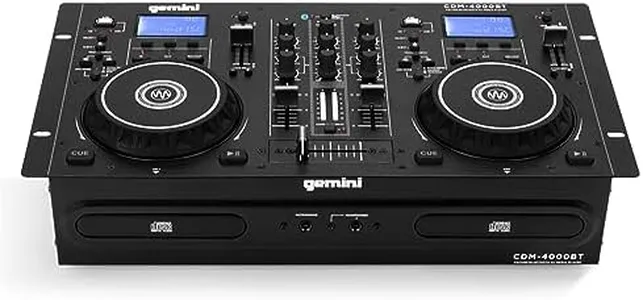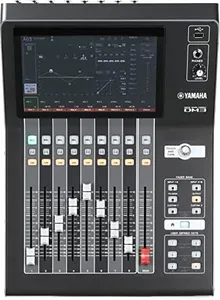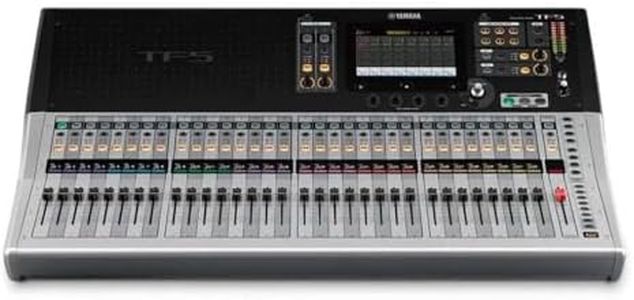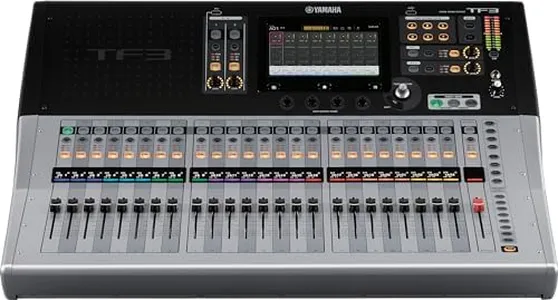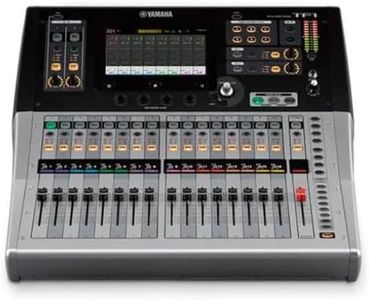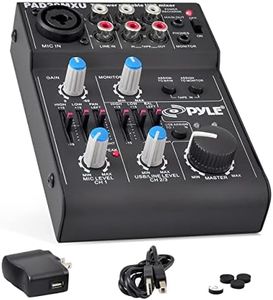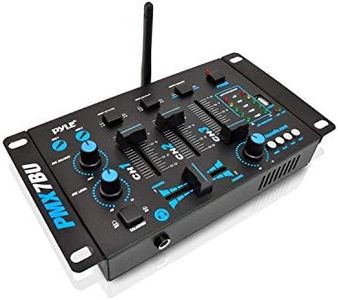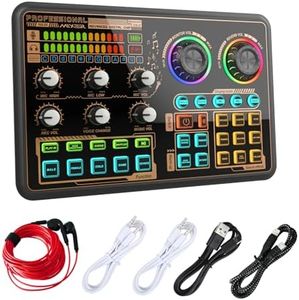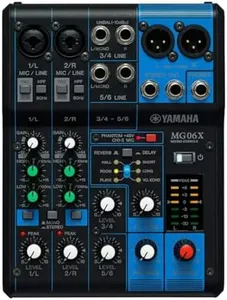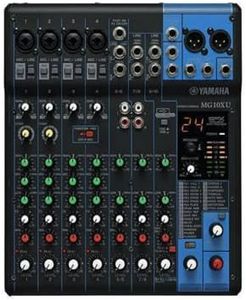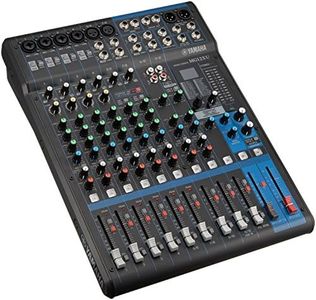We Use CookiesWe use cookies to enhance the security, performance,
functionality and for analytical and promotional activities. By continuing to browse this site you
are agreeing to our privacy policy
10 Best Yamaha Mixers 2025 in the United States
How do we rank products for you?
Our technology thoroughly searches through the online shopping world, reviewing hundreds of sites. We then process and analyze this information, updating in real-time to bring you the latest top-rated products. This way, you always get the best and most current options available.

Buying Guide for the Best Yamaha Mixers
When it comes to choosing a Yamaha mixer, it's important to understand your specific needs and how different features and specifications can meet those needs. Mixers are essential tools for combining and adjusting multiple audio signals, and Yamaha offers a range of models suitable for various applications, from live sound to studio recording. To make an informed decision, you should consider the following key specifications and how they align with your intended use.Number of ChannelsThe number of channels on a mixer determines how many audio sources you can connect and control simultaneously. This is crucial because it directly impacts the mixer's versatility. Mixers with fewer channels (4-8) are suitable for small setups like solo performances or podcasts. Mid-range mixers (12-24 channels) are ideal for bands or small venues, while high-channel mixers (32 and above) are designed for large events or complex studio recordings. Choose a mixer with enough channels to accommodate all your audio sources, plus a few extra for future expansion.
Input TypesMixers come with various input types, including XLR, TRS (1/4 inch), and RCA. XLR inputs are typically used for microphones and are essential for capturing high-quality audio. TRS inputs are versatile and can handle both balanced and unbalanced signals, making them suitable for instruments and line-level devices. RCA inputs are often used for consumer audio equipment like CD players. Ensure the mixer you choose has the right combination of input types to match your equipment. For example, if you plan to use multiple microphones, prioritize a mixer with more XLR inputs.
Built-in EffectsMany Yamaha mixers come with built-in digital effects such as reverb, delay, and chorus. These effects can enhance your audio without the need for external processors. Built-in effects are particularly useful for live performances and small studio setups where space and budget are limited. If you need basic sound enhancement, a mixer with built-in effects can be very convenient. However, if you require more advanced or specialized effects, you might prefer a mixer with fewer built-in effects and plan to use external processors.
EQ (Equalization) ControlsEQ controls allow you to adjust the frequency response of each channel, helping you shape the sound to your liking. Basic mixers may offer simple 2- or 3-band EQs (bass, mid, treble), while more advanced models provide parametric EQs with more precise control over specific frequency ranges. If you need to fine-tune your audio, especially in a studio setting, look for a mixer with comprehensive EQ options. For general live sound applications, a simpler EQ setup might suffice.
Auxiliary SendsAuxiliary sends (or aux sends) are used to create separate mixes for monitors, effects, or recording. They allow you to send a portion of the signal from each channel to an external device or a different output. This is important for live performances where musicians need custom monitor mixes or for routing signals to external effects processors. Mixers with more aux sends offer greater flexibility. If you need multiple monitor mixes or plan to use external effects, choose a mixer with a higher number of aux sends.
USB/Recording CapabilitiesMany modern mixers come with USB connectivity, allowing you to record directly to a computer or playback audio from a digital source. This feature is essential for home studios and live recording setups. Some mixers also offer multi-track recording capabilities, which enable you to record each channel separately for more detailed post-production work. If recording is a priority, look for a mixer with robust USB or digital recording features.
Size and PortabilityThe physical size and weight of the mixer can be important, especially if you need to transport it frequently. Compact mixers are easier to carry and set up, making them ideal for mobile DJs, small gigs, or home studios with limited space. Larger mixers, while offering more features and channels, can be cumbersome to move. Consider how often you'll need to transport the mixer and choose a size that balances functionality with portability.
Most Popular Categories Right Now
